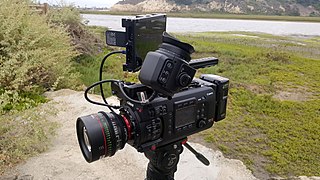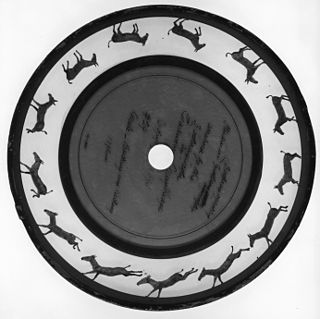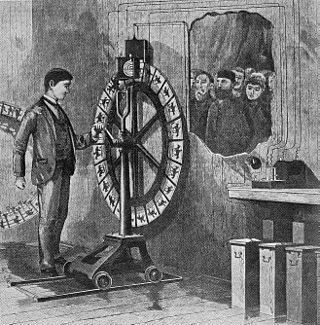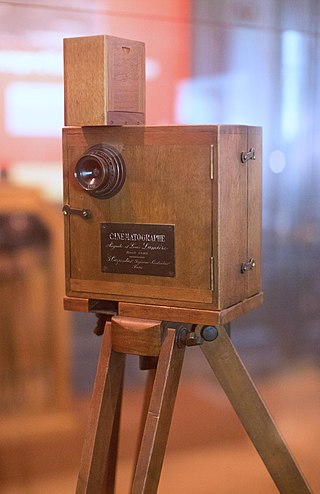| |||
|---|---|---|---|
| +... |
| Years in film |
|---|
 |
| 19th century |
| 1870s |
The decade of the 1880s in film involved significant events.
| |||
|---|---|---|---|
| +... |
| Years in film |
|---|
 |
| 19th century |
| 1870s |
The decade of the 1880s in film involved significant events.
This is a list of actors and filmmakers who were born between years 1880 and 1884. See also:
| Year | Month | Date | Name | Country | Profession | Died | |
| 1880 | January | 6 | Tom Mix | US | Actor | 1940 | |
| January | 17 | Mack Sennett | US | Actor, producer, director | 1960 | ||
| January | 29 | W. C. Fields | US | Actor | 1946 | ||
| February | 8 | Viktor Schwanneke | Germany | Actor | 1931 | ||
| February | 9 | Howard Hickman | US | Actor, director, writer | 1949 | ||
| February | 18 | Egon Brecher | Austria | Actor, director | 1946 | ||
| February | 28 | Hale Hamilton | US | Actor, writer, producer | 1942 | ||
| March | 10 | Broncho Billy Anderson | US | Actor | 1971 | ||
| April | 13 | Charles Christie | Canada | Film Studio Owner | 1955 | ||
| June | 7 | Thorleif Lund | Norway | Actor | 1956 | ||
| July | 12 | Tod Browning | US | Director | 1962 | ||
| August | 6 | Hans Moser | Austria | Actor | 1964 | ||
| October | 23 | Una O'Connor | Ireland | Actress | 1959 | ||
| November | 2 | Fritz Achterberg | Germany | Actor | 1971 | ||
| December | 10 | Fred Immler | Germany | Actor | 1965 | ||
| 1881 | January | 24 | Elsa Wagner | Germany | Actress | 1975 | |
| February | 10 | Pauline Brunius | Sweden | Actress, director, screenwriter | 1954 | ||
| August | 12 | Cecil B. DeMille | US | Director, producer | 1959 | ||
| September | 11 | Asta Nielsen | Denmark | Actress | 1972 | ||
| November | 13 | Carl Schenstrøm | Denmark | Actor | 1942 | ||
| November | 24 | Al Christie | Canada | Director, producer | 1951 | ||
| December | 5 | René Cresté | France | Actor, director | 1922 | ||
| 1882 | January | 17 | Noah Beery | US | Actor | 1946 | |
| January | 23 | Eero Kilpi | Finland | Actor | 1954 | ||
| February | 15 | John Barrymore | US | Actor | 1942 | ||
| February | 27 | George Terwilliger | US | Director, screenwriter | 1970 | ||
| May | 10 | Thurston Hall | US | Actor | 1958 | ||
| May | 16 | Mary Gordon | Scotland | Actress | 1963 | ||
| May | 23 | James Gleason | US | Actor, screenwriter | 1959 | ||
| July | 27 | Donald Crisp | US | Actor | 1974 | ||
| August | 6 | Ernst Eklund | Sweden | Actor | 1971 | ||
| September | 10 | Paul Harvey | US | Actor | 1955 | ||
| October | 20 | Bela Lugosi | Hungary | Actor | 1956 | ||
| 1883 | January | 10 | Francis X. Bushman | US | Actor | 1966 | |
| January | 10 | Florence Reed | US | Actress | 1967 | ||
| February | 22 | Marguerite Clark | US | Actress | 1940 | ||
| February | 22 | Harry Depp | US | Actor | 1957 | ||
| February | 22 | Olga Svendsen | Denmark | Actress | 1942 | ||
| March | 4 | Maude Fealy | US | Actress | 1971 | ||
| March | 26 | Poul Reumert | Denmark | Actor | 1968 | ||
| April | 1 | Lon Chaney | US | Actor | 1930 | ||
| April | 1 | Edvard Drabløs | Norway | Actor, director | 1976 | ||
| April | 1 | Frédéric Mariotti | France | Actor | 1971 | ||
| April | 2 | Pearl Doles Bell | US | Scenarist, Editor | 1968 | ||
| April | 6 | Walter Huston | Canada | Actor | 1950 | ||
| May | 1 | Tom Moore | Ireland | Actor | 1955 | ||
| May | 6 | Alberto Collo | Italy | Actor | 1955 | ||
| May | 20 | Stanley Fields | US | Actor | 1941 | ||
| May | 23 | Douglas Fairbanks | US | Actor | 1939 | ||
| June | 13 | Merta Sterling | US | Actress | 1944 | ||
| August | 12 | Marion Lorne | US | Actress | 1968 | ||
| August | 19 | Elsie Ferguson | US | Actress | 1961 | ||
| September | 3 | Robert Middlemass | US | Actor, Playwright | 1949 | ||
| October | 5 | Ernst Pittschau | Germany | Actor | 1951 | ||
| November | 19 | Ned Sparks | Canada | Actor | 1957 | ||
| December | 16 | Max Linder | France | Actor | 1925 | ||
| December | 24 | Stefan Jaracz | Poland | Actor | 1945 | ||
| 1884 | February | 14 | Nils Olaf Chrisander | Sweden | Actor, director | 1947 | |
| February | 16 | Robert J. Flaherty | US | Filmmaker | 1951 | ||
| April | 30 | Olof Sandborg | Sweden | Actor | 1965 | ||
| May | 8 | Valdemar Psilander | Denmark | Actor | 1917 | ||
| May | 10 | Olga Petrova | UK | Actress | 1977 | ||
| May | 26 | Charles Winninger | US | Actor | 1969 | ||
| May | 28 | Edward Keane | US | Actor | 1959 | ||
| July | 12 | Louis B. Mayer | Russia | Producer | 1957 | ||
| July | 23 | Emil Jannings | Germany | Actor | 1950 | ||
| July | 24 | Maria Caserini | Italy | Actress | 1969 | ||
| August | 7 | Billie Burke | US | Actress | 1970 | ||
| August | 11 | Hermann Wlach | Austria | Actor | 1962 | ||
| August | 25 | James C. Morton | US | Actor | 1942 | ||
| October | 4 | Ida Wüst | Germany | Actress | 1958 | ||
| October | 11 | Sig Ruman | Germany | Actor | 1967 | ||
| October | 24 | Emil Fjellström | Sweden | Actor | 1944 | ||
| December | 1 | Torben Meyer | Denmark | Actor | 1975 | ||
| December | 31 | Mihály Fekete | Hungary | Actor, screenwriter, director | 1960 | ||

Film stock is an analog medium that is used for recording motion pictures or animation. It is recorded on by a movie camera, developed, edited, and projected onto a screen using a movie projector. It is a strip or sheet of transparent plastic film base coated on one side with a gelatin emulsion containing microscopically small light-sensitive silver halide crystals. The sizes and other characteristics of the crystals determine the sensitivity, contrast and resolution of the film. The emulsion will gradually darken if left exposed to light, but the process is too slow and incomplete to be of any practical use. Instead, a very short exposure to the image formed by a camera lens is used to produce only a very slight chemical change, proportional to the amount of light absorbed by each crystal. This creates an invisible latent image in the emulsion, which can be chemically developed into a visible photograph. In addition to visible light, all films are sensitive to X-rays and high-energy particles. Most are at least slightly sensitive to invisible ultraviolet (UV) light. Some special-purpose films are sensitive into the infrared (IR) region of the spectrum.
The following list comprises significant milestones in the development of photography technology.

George Eastman was an American entrepreneur who founded the Eastman Kodak Company and helped to bring the photographic use of roll film into the mainstream. After a decade of experiments in photography, he patented and sold a roll film camera, making amateur photography accessible to the general public for the first time. Working as the treasurer and later president of Kodak, he oversaw the expansion of the company and the film industry.
Celluloids are a class of materials produced by mixing nitrocellulose and camphor, often with added dyes and other agents. Once much more common for its use as photographic film before the advent of safer methods, celluloid's common present-day uses are for manufacturing table tennis balls, musical instruments, combs, office equipment, fountain pen bodies, and guitar picks.

A movie camera is a type of photographic camera that rapidly takes a sequence of photographs, either onto film stock or an image sensor, in order to produce a moving image to display on a screen. In contrast to the still camera, which captures a single image at a time, the movie camera takes a series of images by way of an intermittent mechanism or by electronic means; each image is a frame of film or video. The frames are projected through a movie projector or a video projector at a specific frame rate to show the moving picture. When projected at a high enough frame rate, the persistence of vision allows the eyes and brain of the viewer to merge the separate frames into a continuous moving picture.

The zoopraxiscope is an early device for displaying moving images and is considered an important predecessor of the movie projector. It was conceived by photographic pioneer Eadweard Muybridge in 1879. Muybridge used the projector in his public lectures from 1880 to 1895. The projector used 16" glass disks onto which Muybridge had an unidentified artist paint the sequences as silhouettes. This technique eliminated the backgrounds and enabled the creation of fanciful combinations and additional imaginary elements. Only one disk used photographic images, of a horse skeleton posed in different positions. A later series of 12″ discs, made in 1892–1894, used outlines drawn by Erwin F. Faber that were printed onto the discs photographically, then colored by hand. These colored discs were probably never used in Muybridge's lectures. All images of the known 71 disks, including those of the photographic disk, were rendered in elongated form to compensate the distortion of the projection. The projector was related to other projecting phenakistiscopes and used some slotted metal shutter discs that were interchangeable for different picture disks or different effects on the screen. The machine was hand-cranked.
The following is an overview of the events of 1888 in film, including a list of films released and notable births.

Ottomar Anschütz was a German inventor, photographer, and chronophotographer.

The Elektrischen Schnellseher or Electrotachyscope was an early motion picture system developed by chronophotographer Ottomar Anschütz between 1886 and 1894. He made at least seven different versions of the machine, including a projector, a peep-box viewer and several versions with illuminated glass photographs on a rotating wheel viewed on a 12.5 cm (4.9 in) wide milk glass screen by up to seven people at the same time.

Chronophotography is a photographic technique from the Victorian era which captures a number of phases of movements. The best known chronophotography works were mostly intended for the scientific study of locomotion, to discover practical information for animal handlers and/or as reference material for artists. Although many results were not intended to be exhibited as moving pictures, there is much overlap with the more or less simultaneous quest to register and exhibit photographic motion pictures.

Hannibal Williston Goodwin, patented a method for making transparent, flexible roll film out of nitrocellulose film base, which was used in Thomas Edison's Kinetoscope, an early machine for viewing motion pictures.
The following is an overview of the events of 1885 in film, including a list of notable births.
The decade of the 1890s in film involved some significant events.
The decade of the 1870s in film involved some significant events.

The Horse in Motion is a series of cabinet cards by Eadweard Muybridge, including six cards that each show a sequential series of six to twelve "automatic electro-photographs" depicting the movement of a horse. Muybridge shot the photographs in June 1878. An additional card reprinted the single image of the horse "Occident" trotting at high speed, which had previously been published by Muybridge in 1877.

The history of film technology traces the development of techniques for the recording, construction and presentation of motion pictures. When the film medium came about in the 19th century, there already was a centuries old tradition of screening moving images through shadow play and the magic lantern that were very popular with audiences in many parts of the world. Especially the magic lantern influenced much of the projection technology, exhibition practices and cultural implementation of film. Between 1825 and 1840, the relevant technologies of stroboscopic animation, photography and stereoscopy were introduced. For much of the rest of the century, many engineers and inventors tried to combine all these new technologies and the much older technique of projection to create a complete illusion or a complete documentation of reality. Colour photography was usually included in these ambitions and the introduction of the phonograph in 1877 seemed to promise the addition of synchronized sound recordings. Between 1887 and 1894, the first successful short cinematographic presentations were established. The biggest popular breakthrough of the technology came in 1895 with the first projected movies that lasted longer than 10 seconds. During the first years after this breakthrough, most motion pictures lasted about 50 seconds, lacked synchronized sound and natural colour, and were mainly exhibited as novelty attractions. In the first decades of the 20th century, movies grew much longer and the medium quickly developed into one of the most important tools of communication and entertainment. The breakthrough of synchronized sound occurred at the end of the 1920s and that of full color motion picture film in the 1930s. By the start of the 21st century, physical film stock was being replaced with digital film technologies at both ends of the production chain by digital image sensors and projectors.
The practice and appreciation of photographyin the United States began in the 19th century, when various advances in the development of photography took place and after daguerreotype photography was introduced in France in 1839. The earliest commercialization of photography was made in the country when Alexander Walcott and John Johnson opened the first commercial portrait gallery in 1840. In 1866, the first color photograph was taken. Only in the 1880s, would photography expand to a mass audience with the first easy-to-use, lightweight Kodak camera, issued by George Eastman and his company.

Animal Locomotion: An Electro-photographic Investigation of Consecutive Phases of Animal Movements is a series of scientific photographs by Eadweard Muybridge made in 1884 and 1885 at the University of Pennsylvania, to study motion in animals. Published in July 9, 1887, the chronophotographic series comprised 781 collotype plates, each containing up to 36 pictures of the different phases of a specific motion of one subject.